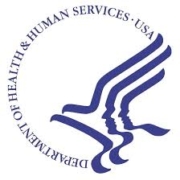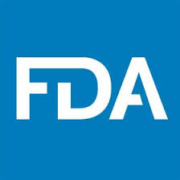The following is the latest COVID-19 information from the federal government as of 2:30 p.m. on Wednesday, October 14.
Reminder: HHS Webinar on Phase 3 General Distributions
HHS will hold a webcast on Thursday, October 15 at 3:00 (eastern) to give providers more information about the Phase 3 general distribution. Go here to register and submit questions. NASH strongly recommends that any provider considering applying for a Phase 3 distribution view the webinar. The application deadline for Phase 3 distributions is November 6.
NASH Advocacy
- NASH has written to members of Congress urging them to prevail on HHS Secretary Alex Azar to restore his department’s June 2020 instructions for how hospitals should calculate their COVID-19-related revenue losses for purposes of receiving CARES Act Provider Relief Fund payments. Revised instructions, issued last month, include a new way of calculating hospital revenue losses that would force many private safety-net hospitals, and others, to return much of their Provider Relief Fund money. Go here to see NASH’s request of Congress.
Provider Relief Fund
- The Provider Relief Fund FAQ has been updated with one new question on page 6 that is marked “Added 10/9/2020.” The new question is “Can providers use Provider Relief Fund distributions to repay payments made under the CMS Accelerated and Advance Payment (AAP) Program?” and the answer is “No, this is not a permissible use of Provider Relief Fund payments.”
CMS COVID-19 Stakeholder Calls
CMS hosts recurring stakeholder engagement sessions to share information related to its response to COVID-19. These sessions are open to members of the health care community and are intended to provide updates, share best practices among peers, and offer attendees an opportunity to ask questions of CMS and other subject matter experts.
Office Hours
Office Hour Calls provide an opportunity for hospitals, health systems, and providers to ask questions of agency officials regarding CMS’s temporary actions that empower local hospitals and health care systems to increase hospital capacity, expand the health care workforce, and promote telehealth in Medicare.
Tuesday, October 27 at 5:00 (eastern) – dial-in and other information to be announced later
Nursing Homes
Wednesday, October 28 at 4:30 (eastern) – dial-in and other information to be announced later.
Department of Health and Human Services
- After the state of Nevada told long-term-care facilities “…to immediately discontinue the use of all COVID-19 point of care (POC) antigen tests until the accuracy of the tests can be better evaluated,” HHS warned the state that “Under federal law, Nevada may not prohibit or effectively prohibit such testing at congregate facilities” and warned of swift, punitive actions if the state did not reverse the order. The state reversed the order.
Food and Drug Administration
The FDA has issued new guidance titled “Enforcement Policy for Modifications to FDA-Cleared Molecular Influenza and RSV Tests During the Coronavirus Disease 2019 (COVID-19) Public Health Emergency.” Many flu viruses and respiratory syncytial virus tests require the same critical components as many COVID-19 molecular assays and this policy seeks to help expand access to certain FDA-cleared molecular tests intended for detection and identification of these viruses and COVID-19 without compromising access to the materials needed for any of these types of tests.
Centers for Disease Control and Prevention
- The CDC has updated its clinical care guidance for health care professionals about COVID-19.
- The CDC has updated its strategies for optimizing providers’ supply of isolation gowns.
- The CDC has updated its guidance on elastomeric respirators and strategies for their use during conventional and surge demand situations.
- The CDC has posted three new items about COVID-19 vaccines:
Congressional Research Service
- The Congressional Research Service has published “Medicaid Telehealth Policies in Response to COVID-19,” a brief paper that offers an “…overview of telehealth actions in response to the Coronavirus Disease 2019 (COVID-19) Public Health Emergency (PHE). It discusses how states leveraged existing flexibilities and PHE-specific federal authorities to increase the number of services, provider types, and other telehealth coverage options under Medicaid.”

 HHS will hold a webcast on Thursday, October 15 at 3:00 (eastern) to give providers more information about the Phase 3 general distribution. Go
HHS will hold a webcast on Thursday, October 15 at 3:00 (eastern) to give providers more information about the Phase 3 general distribution. Go  The FDA has issued new guidance titled “
The FDA has issued new guidance titled “